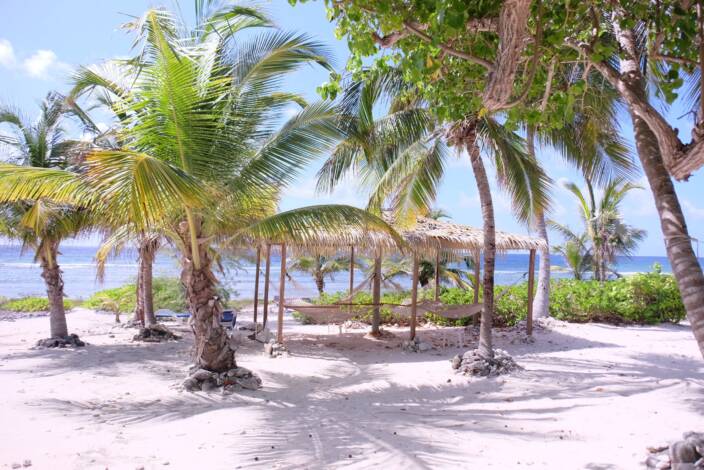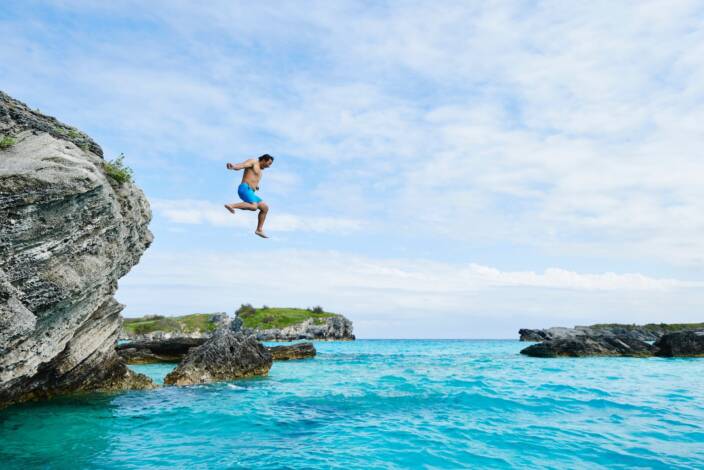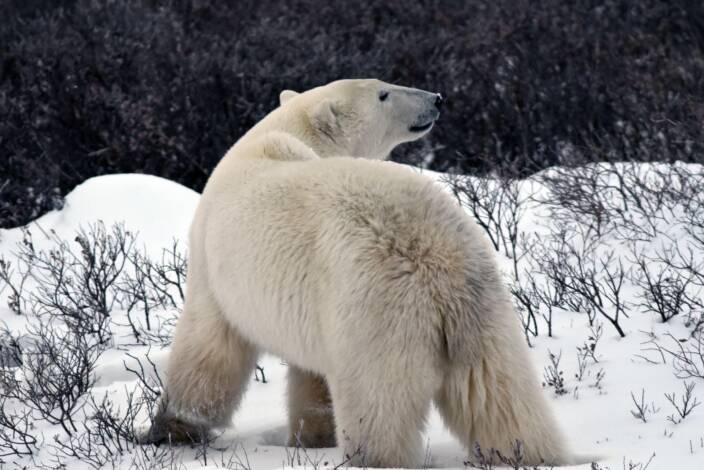
Maritime Majesty: The Wonders of Cape Breton Island, Nova Scotia
March 29, 2021 Jim Byers
It’s not time to travel now. But when it is, Nova Scotia should be one of the places you visit. It’s got a mixture of pretty much everything that makes Canada great; jaw-dropping scenery, majestic ocean views, fabulous food and warm, welcoming people. Here’s the first in a series about great things to see and do in this amazing province.
The road rises and falls and dip and swirls. Off to one side is the majesty of the Atlantic Ocean, with its ever-changing shapes and waves and spinning, overhead clouds and constantly shifting colours of cobalt blue, misty green, slate grey. Off to the other side are deep green forests and craggy mountains of ancient rock, with narrow and wide valleys and row upon row of conifers standing at attention.
The Cabot Trail on Cape Breton Island is hands-down one of the best drives in the world; with wide, sandy beaches, ochre-and-red cliffs that plunge to the sea, adorable towns and some of the best music on the planet, played by passionate, welcoming locals at cozy, welcoming pubs. The island also is home to an historic French fort, marvellous pubs with live music, indigenous Canadian experiences, beautiful hotels and some of the world’s best golf courses.
Here are some things you don’t want to miss on a trip around Cape Breton Island
ENTERTAINMENT
Mabou is a small village with maybe the best pub in Canada, the Red Shoe. It’s a glorious old structure right on the main drag, and there’s good food and excellent, local beer. The pub is owned by members of the Rankin family, one of the best-known musical families in Canada. Expect fine fiddle playing, maybe a honky tonk piano player and just about anything else that strikes someone’s fancy.

The Glenora Inn and Distillery is a marvellous spot in Glenville. When I was there last an 83-year-old named Jerry Deveau was playing spoons with the energy of a 16-year-old, while his band mates played the fiddle and guitar. There also was a young woman with a voice as clear as a Cape Breton lighthouse beam on a foggy night. I don’t recall the name of the song, but one of her tunes went partly like this: “And there’s Gaelic in the fiddle, Like the Gaelic in the Glen, And the songs take on new meaning boys, It’s getting dark again.” The Glenora Inn is beautiful, and there’s a small, rushing creek running through the property.
THERE BE WHALES
There are more than a dozen operators running whale watching tours up and down the cape. I’ve been told that pilot whales are attracted by Celtic music, so don’t be surprised if someone cranks up the tunes while you’re out at sea. If the whales don’t feel like dancing, you might spot seals or Atlantic dolphins.
HISTORY COMES ALIVE
The Fortress of Louisbourg is one of the great historical structures in North America; a brooding palace of stone built by the government of France that dates all the way back to the early 1700s. You can take a great tour of the fortress and admire folks dressed as French soldiers marching about, or take in the smell of freshly baked bread cooking in an old-fashioned oven or fireplace.

Cabots Landing Provincial Park is a small park near the village of Aspy Bay, just a few minutes off the Cabot Trail near the eastern tip of the island. You’ll find a small monument in the name of explorer John Cabot (a Venetian sailor also known as Giovanni Caboto), who landed in the area way back in 1497. There’s also a nice beach.
DRIVING TIPS
Cape Breton experts say the views are best if you turn left once you’ve crossed the Canso Causeway and head up the north/west coast of the island on Highway 19, also known as the Ceilidh Trail. There are plenty of great spots (they’re called look-offs) to pull over and admire the views along the Ceilidh Trail and also the Cabot Trail, which you’ll pick up around Margaree Forks. The trail runs for 298 magical kilometres and is truly spectacular. When you get to the town of South Harbour, turn left off the Cabot Trail and take the road to Smelt Brook and White Point; glorious little villages with homes that perched over the water. It’s a slice of heaven. You’ll pick up the Cabot Trail if you continue past White Point to Neils Harbour.
MUSEUMS AND CULTURAL CENTRES
The Celtic Music Centre in Judique is a lively and fun spot that explains how Gaelic people on the cape were isolated for so many years and stuck to traditional music. You can learn about reels and waltzes and polka and other types of local music. They also have old record players, a Hawaiian guitar and great displays on famous musicians from the region.
The Glace Bay Miner’s Museum is home to powerful stories of miners and their families, You can join a retired mine guide for an underground tour, browse the modern exhibits and stroll through the historic village.
Alexander Graham Bell National Historic Site is a top attraction on the island. Located in Baddeck in the central part of the island, it’s a marvellous facility where you can learn not only about Bell’s work with the telephone but also how he helped create Canada’s first powered flight and the world’s fastest boat. Baddeck is a pretty town on the shores of Bras d’Or Lake.

UNDERRATED SYDNEY AND SOUTHEAST CAPE BRETON
Just a few minutes south of Sydney, Two Rivers Wilderness Park has more than 500 acres of land with more than 50 species of native and non-native animals and birds, a petting zoo, hiking and cross-country ski trails, wagon and sleigh rides, a “you-fish” pond, children’s playground, and more.
Eskasoni Cultural Journeys is a great place to learn about Mi’kmaq Culture. They explain things through drums, food and folkore, allowing visitors to feel the stirring beat of First Nations drums, eat Mi’kmaq food over an open fire and hear marvellous, ancient stories.
Isle Madame is a well-known spot for Acadian history on Cape Breton Island. The Marache Point Lighthouse is a beautiful spot on a rocky stretch of Cape Breton coastline.
Membertou Heritage Park is a five-acre site that offers a living history of the local Mi’kmaq people. There’s a large indoor exhibit and program area that fully immerses visitors in this marvellous, ancient culture. Their Petroglyphs gift shop specializes in First Nations arts and crafts from across the country.
Built on an isthmus, the 800-metre St. Peters Canal joins the Atlantic Ocean to the sparkling Bras d’Or Lake, meandering along Battery Park, popular for boating, fishing, and picnicking.
GLORIOUS GOLF
Cabot Links made a big name for itself when it opened in 2011. A few years later, Cabot Cliffs opened on higher ground next door and went totally viral. Some golf magazines have named it one of the top ten courses in the world. They’ve now added a par-three course with stellar coastal views. Across the island in Ingonish is the marvellous Highlands Links course, designed by legendary golf architect Stanley Thompson.

COOL ACCOMODATIONS
Colindale Beach Villas is a new spot with three bedroom vacation homes on a 50-acre site near Port Hood, with easy access to Cabot Cliffs Golf Course and the world-renowned Cabot Trail
Cape Breton Highlands National Park now has lovely tent structures you can stay. Called O’tentiks, they feature raised flooring and comfy bunk beds under a giant, sturdy tent and come complete with open-air bbq grills.
Valley View Chalets are a series of units perched on a hill overlooking the gorgeous Margaree Valley. The rooms offer luxurious amenities, and one of the units has a two-person hot tub.
Cape Breton Tiny House Rentals features two small homes on wheels, each outfitted with air conditiong, smart TV’s, Wi-I, kitchen appliances and flush toilets. They offer fabulous views of Margaree Harbour on one side and views of the Cape Breton Highlands on the other.
Keltic Lodge is a glorious, old school property that’s perched on a narrow peninsula in Ingonish with red roofs and a brilliant white exterior and a broad, sweeping lawn dotted with colourful chairs.

COMING SOON
The first eight-person gondola in Atlantic Canada is scheduled to open around Canada Day at Cape Smokey Provincial Park, a 10-minute drive from Ingonish and Keltic Lodge. The gondola will whisk folks from the edge of the Atlantic Ocean to the top of Cape Smokey in four minutes, a distance of 320 metres, with stunning sea and coastline views on the way. The gondola will run year-round. The Ingonish Treewalk should open around the same time. The Treewalk features series of walkways and ramps that will soar 30 meters into the air and will feature displays that allow visitors to explore local nature, learn about the history of the Mi’kmaq people, and soak in amazing views.
About the Author













